9 invasive plants and how to stop them from spreading – from hogweed to bamboo
How to spot stubborn species before they cause damage
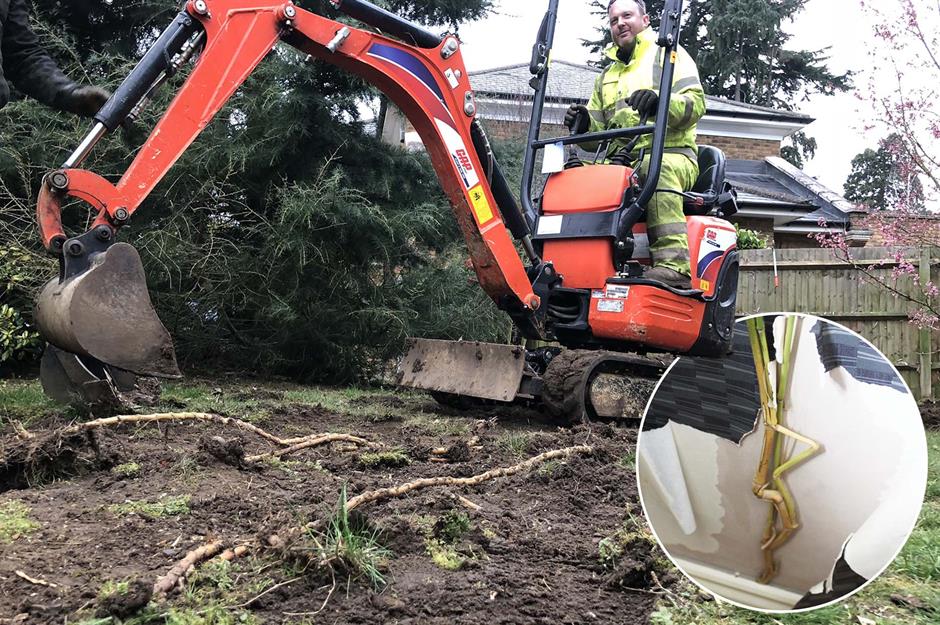
Most gardeners are familiar with battling invasive weeds, but did you know some ornamental species can also become a nuisance?
Stubborn native and non-native species alike can not only cause damage to your home and garden, but if left to get out of control, can become a threat to other properties, sometimes resulting in an unwanted lawsuit.
Click or scroll on to discover how to identify common invasive plants and how to responsibly treat them if you discover them on your property...
Golden bamboo (Phyllostachys aurea)

While it may seem like a harmless garden plant, bamboo is one of the most invasive species in the UK, far outstripping Japanese knotweed.
Hardy, fast-growing and tolerant of most soil types, bamboo’s roots are capable of spreading up to 30 feet (9m) from the parent plant, with the ability to push through brickwork, drains, patios, cavity walls and even weaknesses in concrete.
A recent YouGov study found that almost 5% of British homeowners have bamboo in their own or an adjacent garden and that only 24% would be concerned to discover bamboo growing near their home.
Bamboo: what can go wrong

Isobel Chetwood of Knutsford, Cheshire, discovered bamboo shoots bursting through a raised bed in her garden, having spread from her neighbour’s property.
When weedkiller didn't work, a mechanical digger was needed to excavate the network of roots embedded beneath her patio. It cost a jaw-dropping £10,000 to rid both properties of the pesky plants, according to plant removal specialist Environet.
"I’d advise anyone thinking about planting bamboo to avoid it at all costs," says Isbobel. "It shouldn’t be sold at garden centres...or at least not without a clear warning."
How to identify bamboo
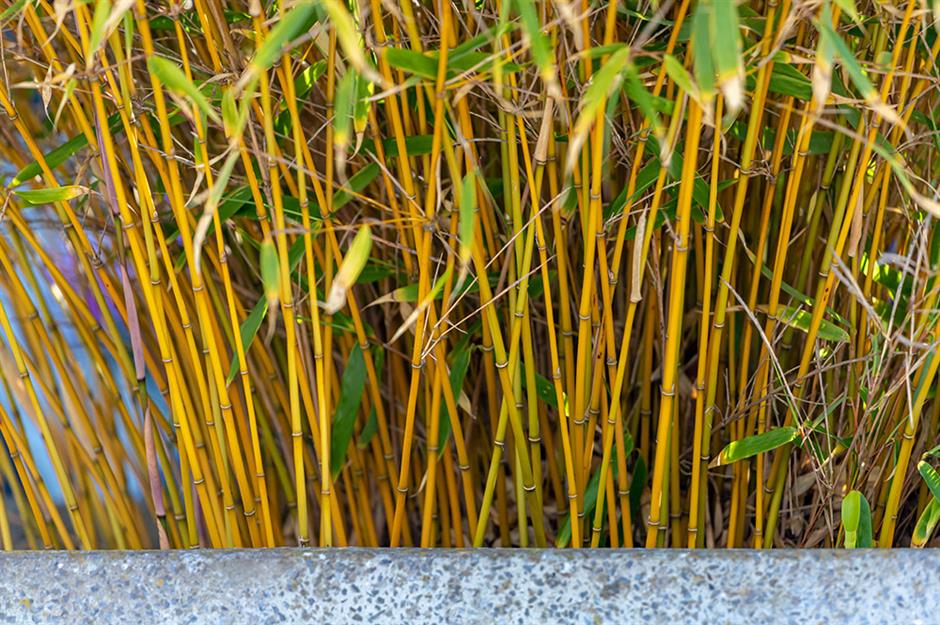
While bamboo is great for shielding and aesthetic purposes, if you have some in your garden, it's worth checking what type it is.
The best way to discover whether you have an invasive running bamboo, like golden bamboo, is to look at the plant's root system. Golden bamboo has far-reaching roots, or rhizomes, that grow horizontally underground.
Each rhizome has a node, which will either sprout to form new canes or become new rhizomes that will extend further.
Bamboo treatment
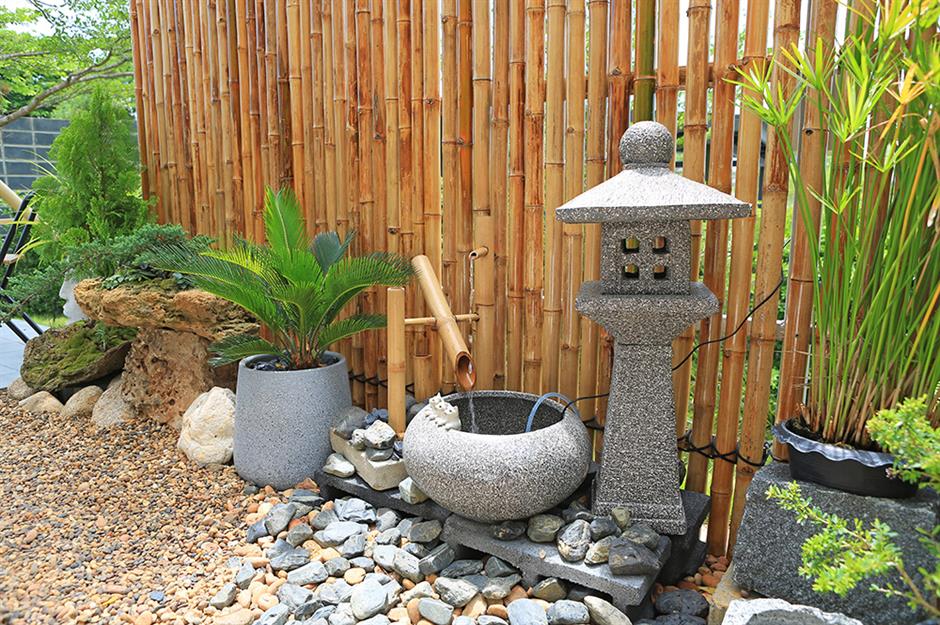
Prevention is key when adding bamboo to your garden – always plant in pots to contain the roots, avoid running varieties and prune regularly.
Some people attempt to manage infestations themselves by cutting the canes to the ground when new leaves appear, but if you are concerned, get a specialist in, who can excavate fully and give you a five-year guarantee.
If buying a property with bamboo in the garden – it currently does not have to be declared – then it's recommended to get a proper survey done to assess the risk.
Japanese knotweed (Reynoutria japonica)
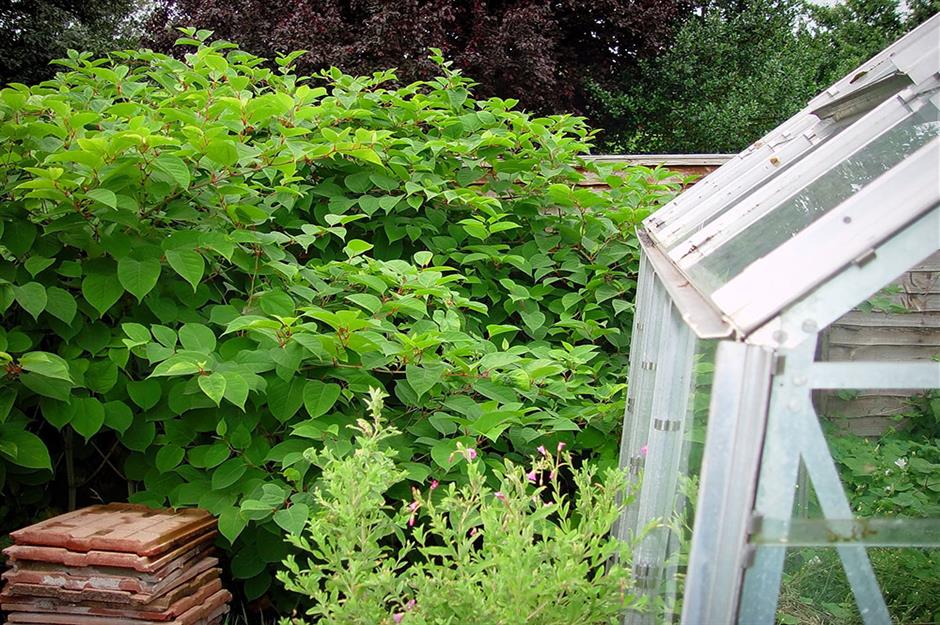
The most well-known of all invasive plants and the one most likely to strike terror into homeowners is Japanese knotweed. If this tricky species grows too close to a property it can damage the foundations, and if left untreated, it will make a home unmortgageable.
Around 5% of homes across the UK are thought to be affected by knotweed, which impacts property prices by five to 10%, according to invasive plant specialists Environet.
Japanese knotweed: what can go wrong
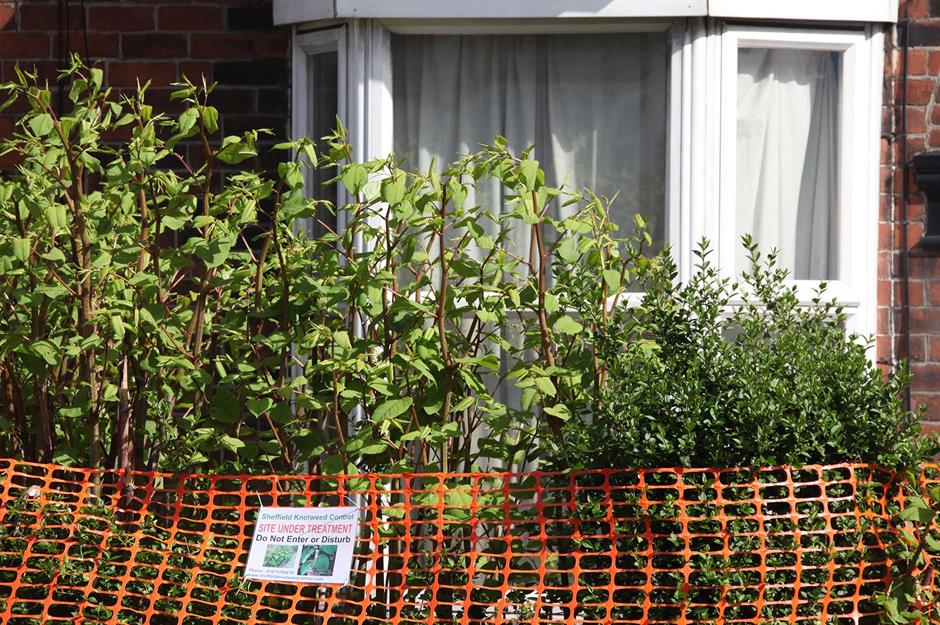
In 2018, Jonathan Downing discovered knotweed growing in the garden of his new home in Raynes Park, southwest London. He sued the former owner, Jeremy Henderson, who had ticked a box saying that no Japanese knotweed was present, which later proved not to be the case.
In early 2023, Mr Henderson was ordered to pay £32,000 in damages, plus £200,000 in legal costs, after evidence was presented to the court showing that the weed had previously been treated with herbicide.
How to identify Japanese knotweed
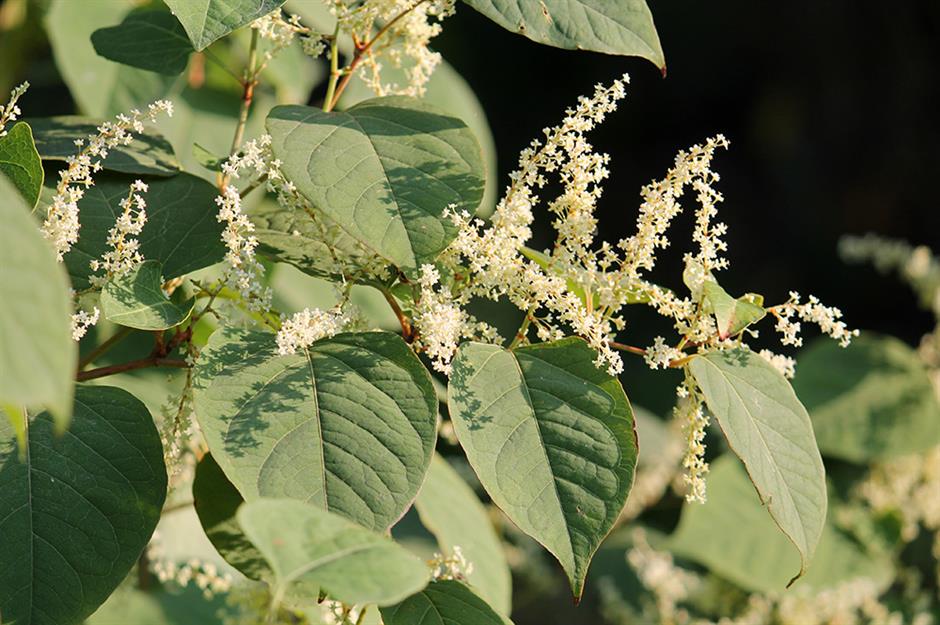
Japanese knotweed can look very different depending on what time of year it is: from late spring, reddish-purple shoots emerging from pink buds may be seen at ground level, while in summer they have usually grown to look more like tall canes with purple flowers.
In late summer/autumn, white flowers hanging in bunches might be present and shovel-like leaves with a zigzag pattern along the stems are also a giveaway.
Japanese knotweed treatment

The problem with Japanese knotweed is that it can grow 10-13 feet (3-4m) in just 10 weeks, and though it can be managed with chemicals, effective treatment can take up to five years.
You can manage small patches on your own, but as it is considered controlled waste, it can only be disposed of at licensed landfill sites. For peace of mind, it is best practice to enlist the help of a Japanese knotweed removal specialist.
Ivy (Hedera helix)

According to the Royal Horticultural Society (RHS), the various types of ivy have a lot to offer gardeners, attracting wildlife and keeping buildings cool in summer and less damp in winter.
However, though ivy-clad buildings are very romantic-looking, on older buildings with cracks or crumbling façades, English ivy, with its strong aerial roots, can exploit vulnerable parts of a property’s structure. It can also act as a cloak, hiding any damage to a building until it’s too late.
Ivy: what can go wrong

Not only can ivy cause structural damage due to its strong roots, as seen here, but it can also pose a fire hazard.
In 2018, a home in Chatham, Kent caught fire after boiler works carried out at the home caused ivy climbing up the exterior of the building to catch light, damaging the roof.
"Foliage can easily catch fire when exposed to radiated heat and crews are urging people to take care when having controlled bonfires or barbecues in the garden near to trees, bushes, fences and sheds," Kent Fire and Rescue said.
How to identify ivy

You will recognise ivy from its dense, evergreen foliage. When it is climbing, it has glossy, five-lobed leaves and its aerial roots run off the stems and it is these that cling to walls.
If there are no cracks in the building, the main thing to worry about is pruning the ivy back around any openings such as gutters. If you are concerned about the fabric of the building, you may need to get more hands-on.
Ivy treatment
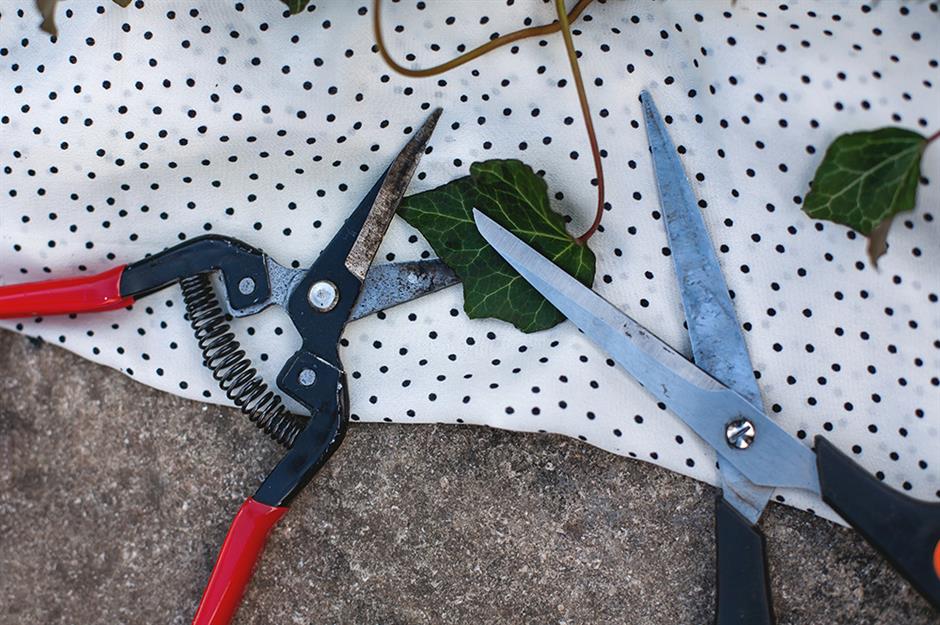
Before pruning or cutting back, you’ll need to check there are no nesting birds as it is illegal to destroy any bird nests while they are still in use. Then the RHS suggests cutting the stems back to the ground and digging out the wooden stump.
Aerial roots are stubborn and may need to be removed using a hard brush or some kind of scraper. Only resort to chemical controls if really necessary and even then only in a “highly targeted manner”.
Giant hogweed (Heracleum mantegazzianum)
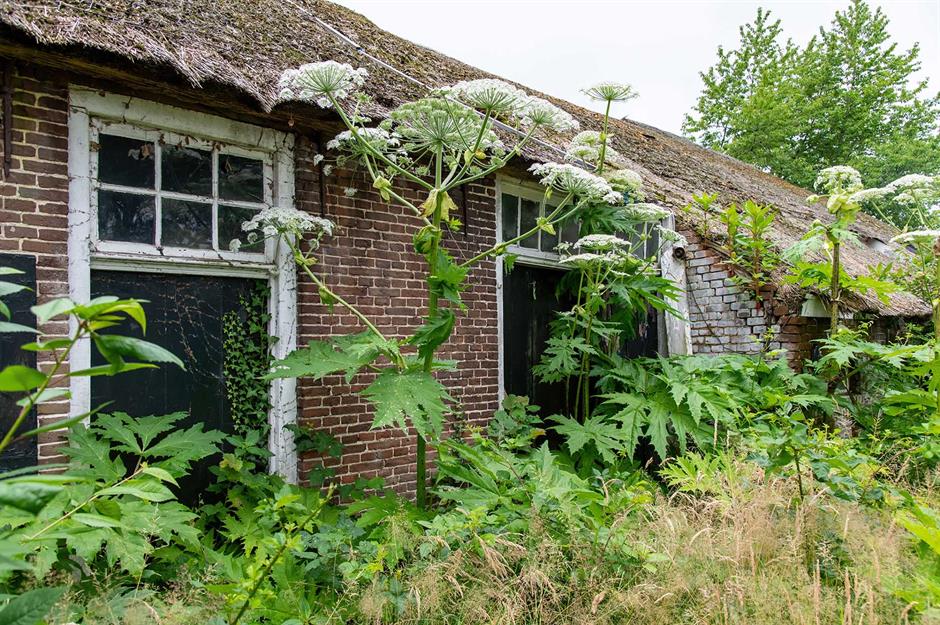
Giant Hogweed, which is native to Russia, has been labelled "Britain's most dangerous plant".
It's considered hazardous – there are toxic chemicals in its sap that can sensitize human skin to ultraviolet light, causing it to blister within two days and the effects can last for years.
As a result, it's illegal to plant or to allow to grow. If the plant is found within the perimeter of your property you must take precautions to stop it spreading to neighbouring homes.
Giant hogweed: what can go wrong
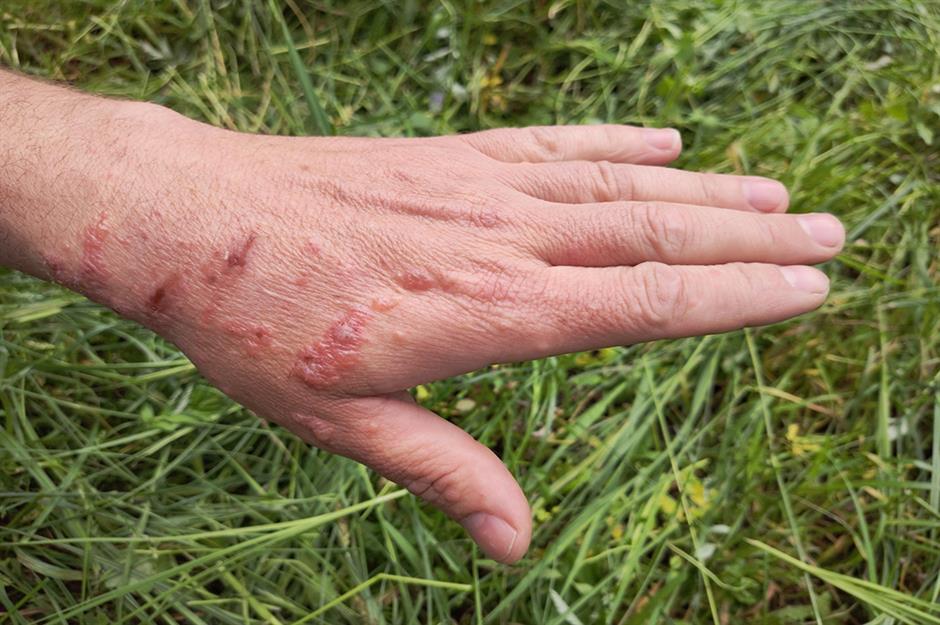
As the weather warms up and people spend more time outside during the summer, incidents involving hogweed increase.
In 2024, barmaid Chloe Douglas from Sunderland was left with third-degree burns and blisters "the size of grapes" after brushing up against the dangerous plant without her knowledge, according to the Daily Mail.
Two years earlier, a four-year-old girl suffered "horrific" burns after coming into contact with giant hogweed in a park in Bolton.
How to identify giant hogweed
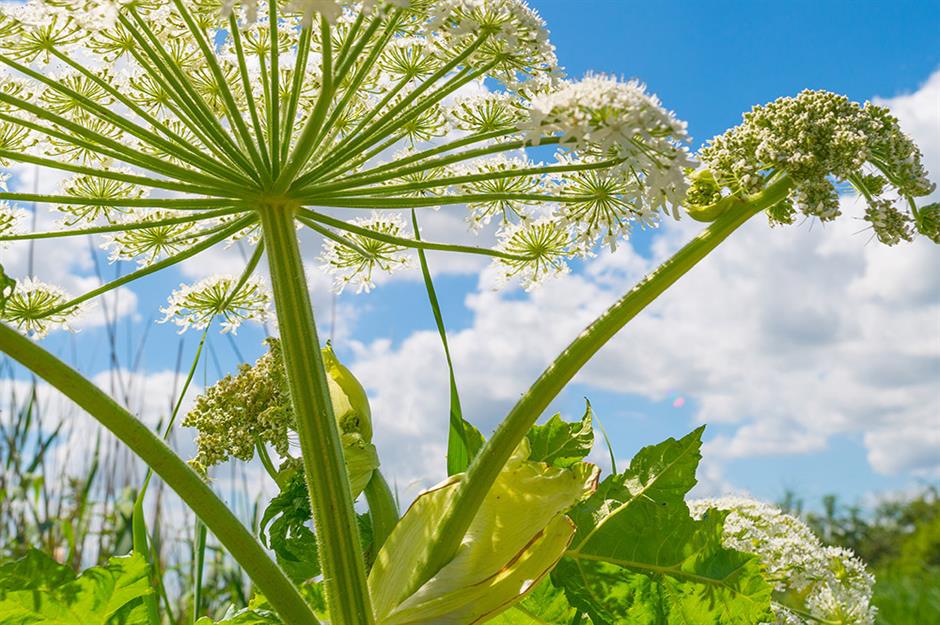
According to the GB Non-Native Species Secretariat (NNSS), giant hogweed is a member of the cow parsley family that has flowering stems that are typically 6.5–10 feet (2–3m) high.
It has umbrella-like flower heads and large, jagged leaves and is often found near streams and rivers. It causes a great hindrance to anglers and it was introduced to gardens in the 19th century as a “monumental curiosity”.
Giant hogweed treatment

The RHS suggests that if you find giant hogweed in your grounds you should cover yourself well with gloves, trousers and long sleeves, and ideally a face mask to avoid burning the skin before attempting removal.
It says May is the best time to attempt to pull young plants up by hand. Do not let hogweed set seed (it reproduces entirely from seed), so remove before the flowers start to fade.
Himalayan balsam (Impatiens glandulifera)

Though a non-native invasive plant, Himalayan balsam has now been naturalised, meaning it has adapted to the environment in the UK and easily spreads.
It is very tolerant of low light and shade and grows quickly, often causing riverbank erosion and “smothering” other vegetation, according to the RHS. It is an offence to grow it in the wild.
Himalayan balsam: what can go wrong

In spring 2025, the species took over Alphin Brook, a popular beauty spot in Exeter. Left unchecked for a decade, it colonised the riverbank and caused "widespread disruption", according to Devon Live.
Improperly disposing of invasive plants, including Himalayan Balsam, can cost £5,000 for individuals and £20,000 for companies. In extreme cases, you could even be prosecuted for environmental harm, according to BusinessWaste.co.uk.
This photo was taken in the grounds of Bank Hall, Lancashire, which have been overrun with Himalayan balsam.
How to identify Himalayan balsam
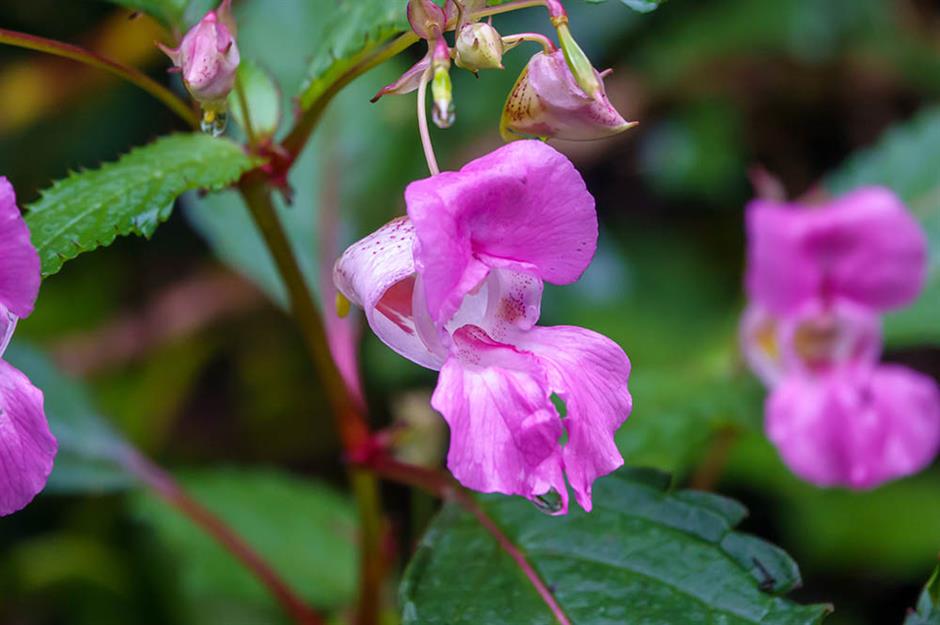
Related to the Busy Lizzie plant, this riparian plant species grows tall annually and between June and October it is identifiable by its pretty pinkish-purple helmet-shaped flowers.
After flowering, seed pods can be seen, which explode open when ready. Its long, pointy leaves, serrated at the edge, are also a telltale sign.
Himalayan balsam treatment
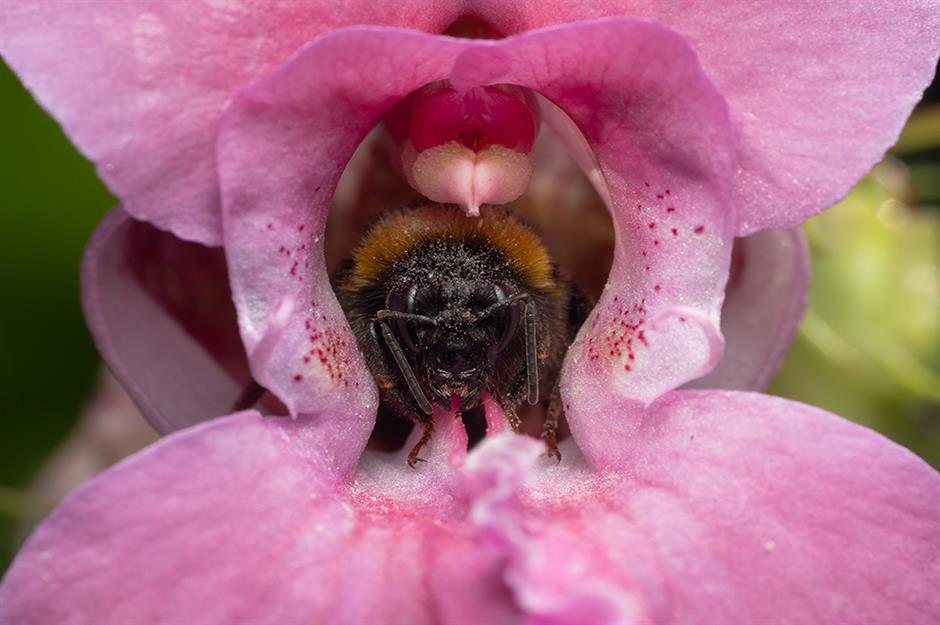
Some gardeners grow Himalayan balsam deliberately as it produces a lot of nectar and therefore is great for attracting bees, but largely it is considered a nuisance.
To get rid, you can try pulling and cutting the plant back – ideally before they flower or seed each year – and for problematic areas, a weedkiller based on glyphosate can be applied to the foliage.
Used carefully it shouldn’t damage nearby plants – just make sure the spray doesn’t drift over to other ornamentals.
Rhododendron (Rhododendron ponticum)
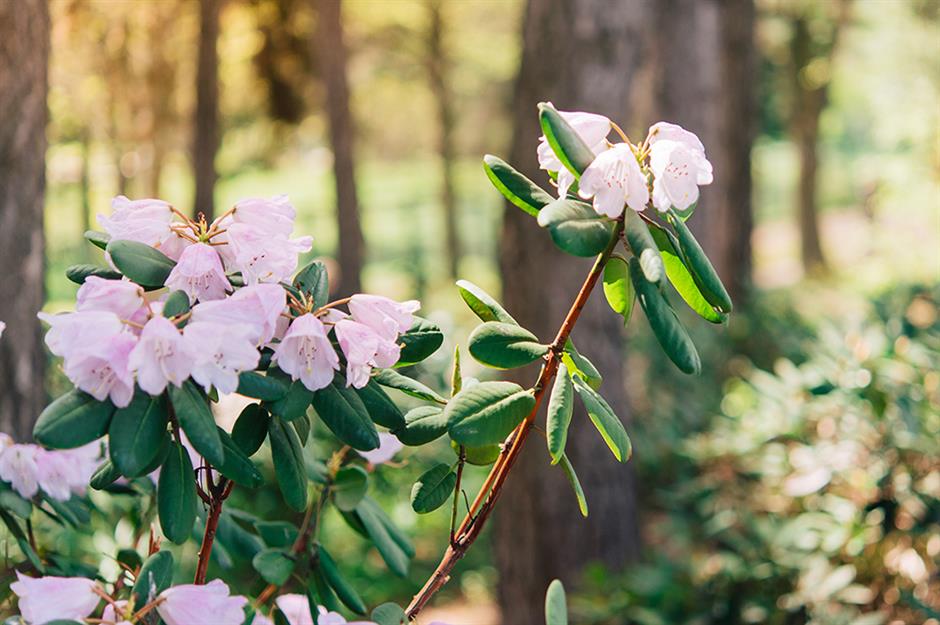
This non-native species was brought to the UK by the Victorians in the late 18th Century and is the bane of many land management schemes. Frequently seen on large estates, its dense thickets create huge areas of shade that are detrimental to native plants.
It is also poisonous to livestock and so, according to the NNSS cannot be managed by grazing. Once it has invaded a garden or other area, few other plants can survive, though the plant itself is prone to diseases.
Rhododendron: what can go wrong

This photo was taken in 2014 of Rhododendron colonising native woodland in Pontardawe, Wales.
The same year, a couple had to be rescued from a rhododendron forest in the Knockmealdown Mountains in County Tipperary, Ireland. The "impenetrable jungle" was so dense that rescuers could not hear each other to coordinate their search.
"It was horrendous. I have been a member of mountain rescue for 15 years and it was probably one of the most dangerous exercises or rescues I've been on," Jimmy Barry of the Mountain Rescue Association told BBC Radio Ulster.
How to identify rhododendron

Evergreen and hardy plants, rhododendrons are identifiable by their dark green leaves, which are dense and glossy, and they have woody stems that become trunk-like as the plant ages and its roots really get stuck in.
They can grow to between 11.5–33 feet (3.5–10m) high and the bright flowers are often purple in colour.
Rhododendron treatment

In Scotland, where rhododendrons are a major threat to native plants and the many rewilding projects underway, Forestry and Land Scotland says it is working hard to eradicate the plant, "using chainsaws, herbicides, heavy machinery and considerable human muscle power".
When the stumps or seedlings start to grow, measures are then taken to try to remove the seed source.
New Zealand pygmyweed (Crassula helmsii)
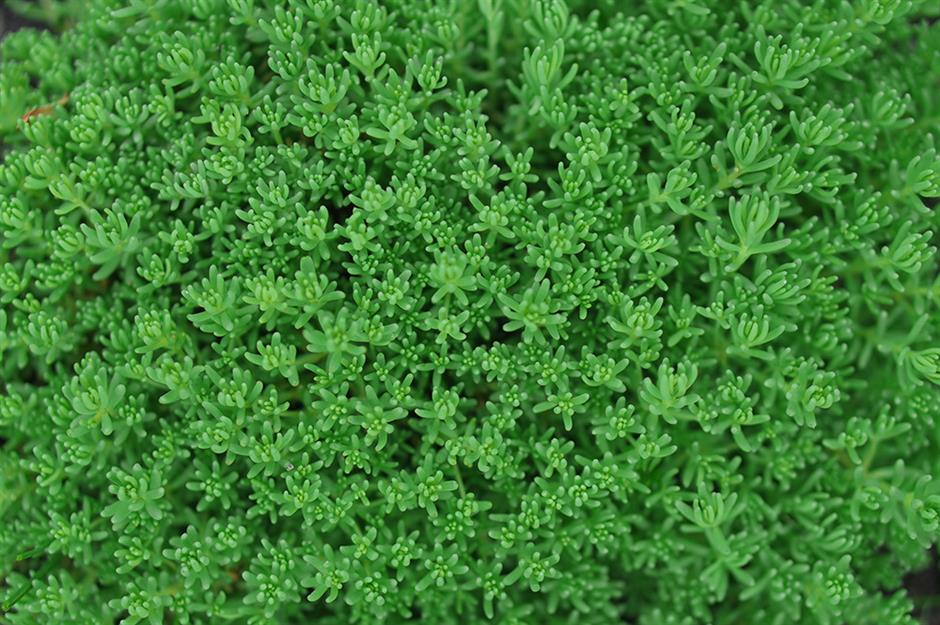
Sometimes known as the Australian swamp stonecrop, you may find this yellowy-green aquatic plant in your pond.
The large mats it creates shade out other plants and reduce the oxygen in the water below so it can be very harmful to any pond life within, including fish, newts, tadpoles and frogs. As such, it is one of five water plants that are now illegal to sell in the UK.
New Zealand pygmyweed: what can go wrong
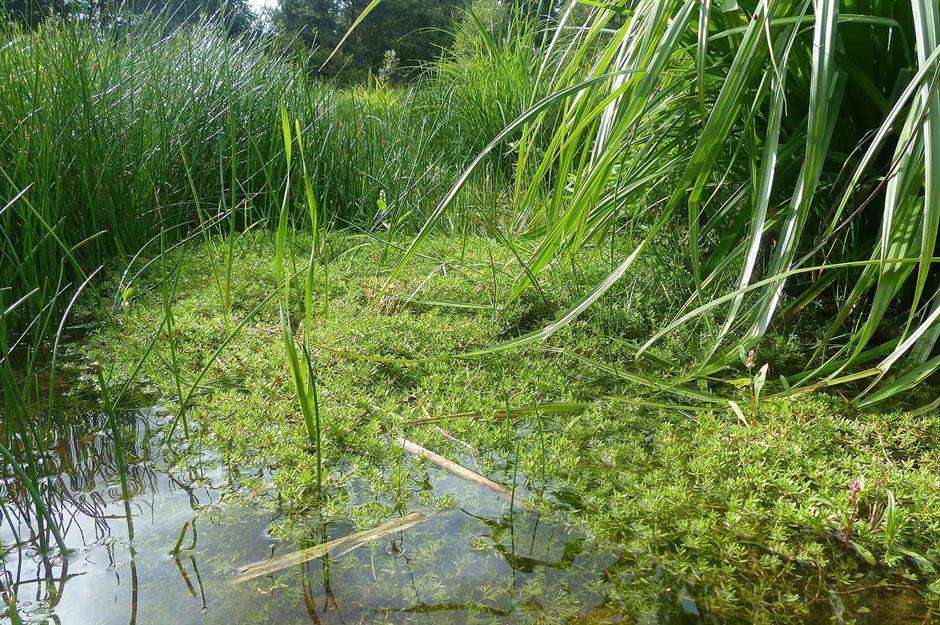
The pernicious weed has already "taken over" at a number of the Lake District's most beautiful bodies of water.
Quite aside from posing a threat to native aquatic life, New Zealand pygmyweed has also reportedly caused dogs to drown after they leapt on the matted plants, believing them to be solid.
How to identify New Zealand pygmyweed

It can usually be identified by its fleshy leaves at the edge of the pond, though when the mats become flatter and submerged they can be harder to spot.
The leaves grow in pairs along the round stem and sometimes flowers are present, which have four petals and are usually white or pale pink.
New Zealand pygmyweed treatment

Glyphosate-based herbicides can be used to some effect (best on the leaves themselves) but you will probably want to drain the pond first for the most effective treatment. Remember to allow time for amphibians to leave the area before starting treatment.
The plant can travel from one pond area to another on clothes, animals and equipment, so be sure to clean everything down once you’ve worked on it.
Green alkanet (Pentaglottis sempervirens)

Green alkanet is native to southwest Europe and was introduced to Britain as an ornamental plant in around 1700. Extremely vigorous, it had already escaped into the wild by 1724.
Found in damp, shady places, the perennial is considered a weed by many, although it's not illegal to grow in the UK.
It is still often cultivated in gardens due to its pretty flowers, but as well as being pollinated by bees, it can easily travel on pets or clothing and can reseed itself, hence it can quickly take over.
Green alkanet: what can go wrong
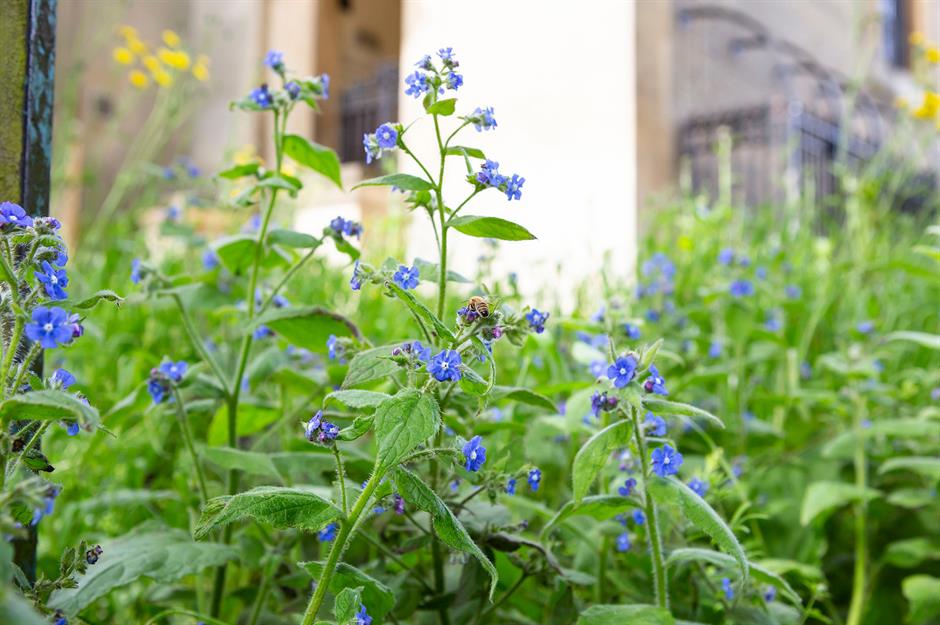
It's important to wear gloves while handling green alkanet, as the fine hairs on its stem and leaves can cause skin irritation.
Like most fast-growing, invasive species, this pretty plant will smother and kill other plants if left unchecked.
How to identify green alkanet
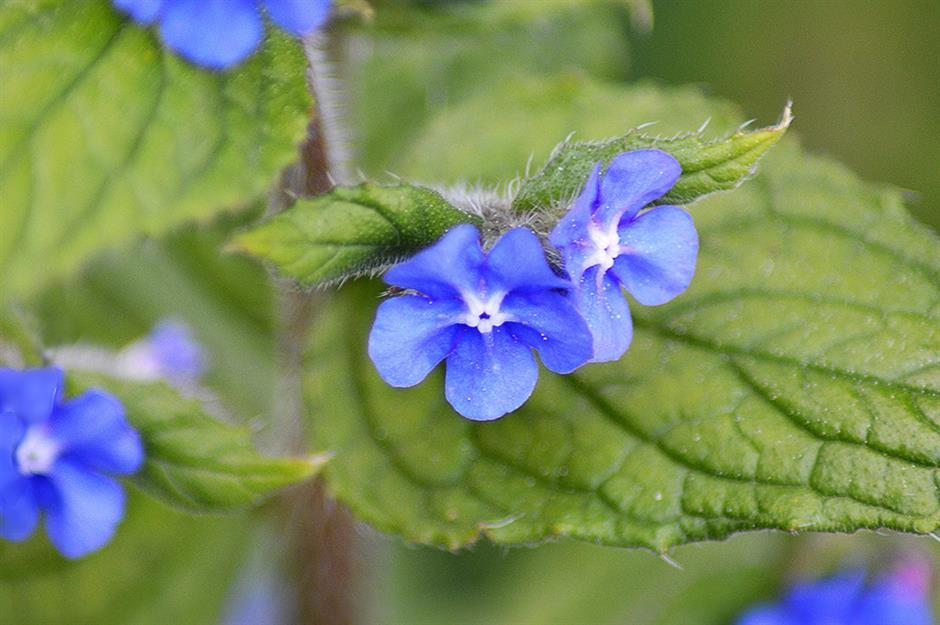
Part of the forget-me-not family of flowers, the RHS says the green alkanet can be identified by its hairy stems and its leaves, which are both bristly and broadly ovate.
The flowers are bright blue with a white centre and the plant has pink buds from April to June.
Green alkanet treatment
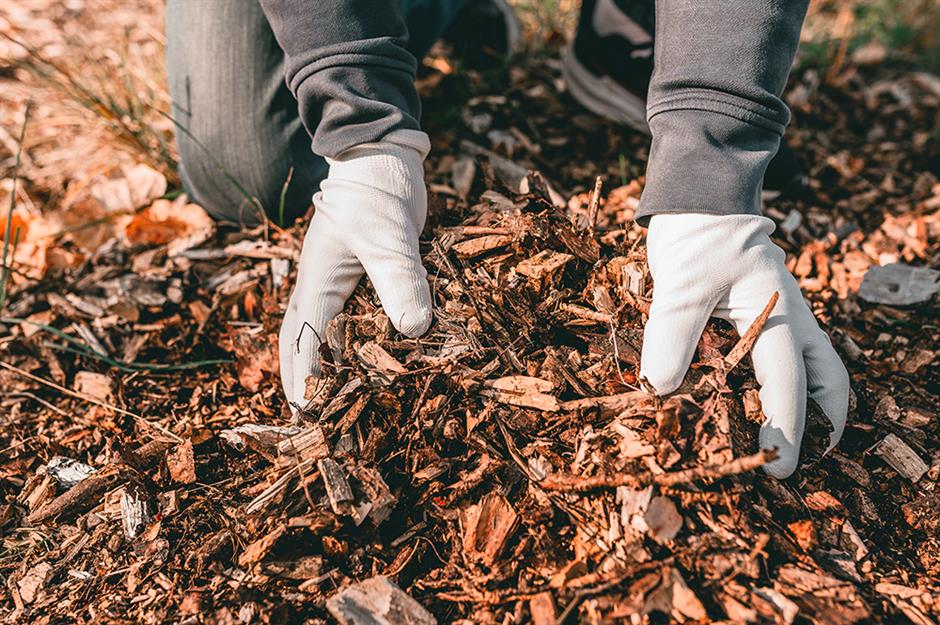
The RHS advises deadheading plants before they set seed and digging deeply to remove roots, though hand weeding and hoeing any seedlings as soon as you spot them is also good. Try to hoe the seedlings promptly before the plants flower – you'll need to stay on top of this throughout the year.
Covering the affected doil with a mulching film, cardboard or layer of woodchips to a depth of at least 8cm can also prove useful.
Three-cornered garlic (Allium triquetrum)
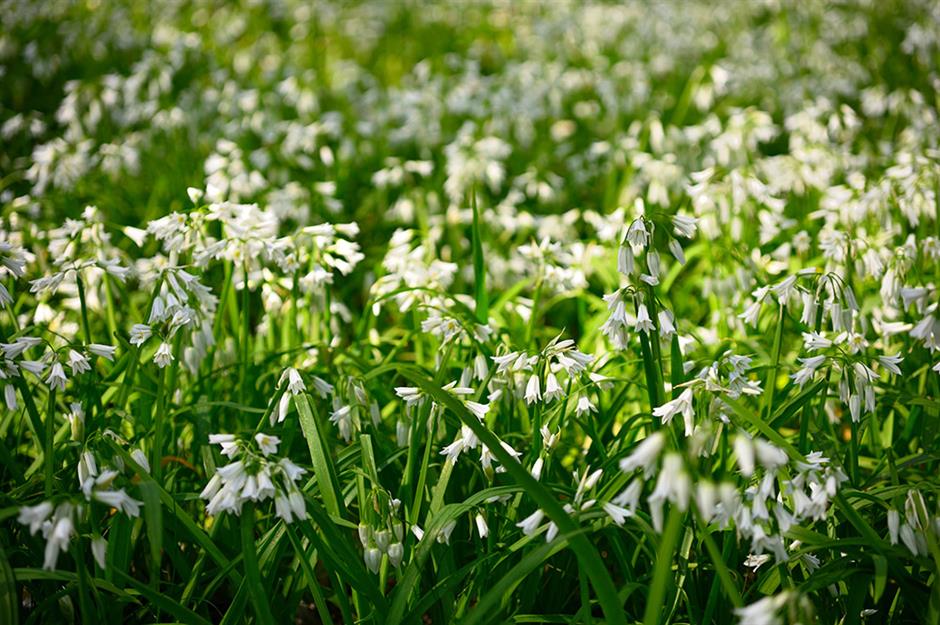
Though similar in appearance and scent, this invasive Mediterranean species differs from our beloved British wild garlic, although both plants are edible.
Three-cornered garlic is mostly spread via ants, who carry its large seeds to new locations, where it can easily spread. It can quickly form dense colonies that overrun native plants like primroses and violets.
Three-cornered garlic: what can go wrong

Listed as a Schedule 9 species under the Wildlife and Countryside Act 1981, it's illegal to plant three-cornered garlic or allow it to spread into the wild. If you do, you could face a fine or even a prison sentence.
The advance of the plant has left Guernsey's beautiful bluebell woods under dire threat. Since 2022, volunteers have cleared as many of the bulbs as possible. However, "there is no guarantee that the bluebells can be saved", according to the official website for the States of Guernsey.
How to identify three-cornered garlic

According to Wild Food UK, this non-native plant is quite easy to identify thanks to its flowers that hang in clusters and resemble white bluebells with a green stripe along each of its six petals.
Before opening, the flowers are covered in a lanceolate sheath. The plants have long, thin V-shaped leaves.
Three-cornered garlic treatment

Though the RHS doesn’t have specific advice on the removal of this form of wild garlic, advice for other garlic varieties will also work here: namely, to remove all bulbs with a hand trowel or fork.
It’s not an easy task and you may also have to sieve the soil to make sure you’ve got rid of even the smallest of bulbs. If you must resort to weedkiller, do it in spring before the plant flowers and take extra care around the wooden bases of nearby shrubs and trees so they don’t absorb any of the spray.
Common ragwort (Jacobaea vulgaris)

As a native British wildflower, ragwort is relied upon by more than 200 invertebrates, including bees, butterflies and moths. However, it's also poisonous to some animals and, thanks to its invasive nature, it's listed under the Weeds Act 1959, meaning landowners are legally obliged to keep it in check.
Ragwort grows well in wildlife gardens and wildflower meadows, as well as grassland and waste ground, and it's generally resistant to pests and diseases.
Common ragwort: what can go wrong

Ragwort is poisonous to horses and cattle, causing irreversible liver damage and even death if eaten.
In May 2025, a rescued foal had to be put down after blood tests revealed liver disease caused by suspected ragwort toxicity, according to Horse and Hound.
Ronald Wheeler of Liverpool was jailed for 12 weeks in August 2019 after he ignored council warnings about ragwort and it poisoned and blinded his horse Oscar. He was put down by an RSPCA vet, who found the horse in a distressed state.
How to identify common ragwort
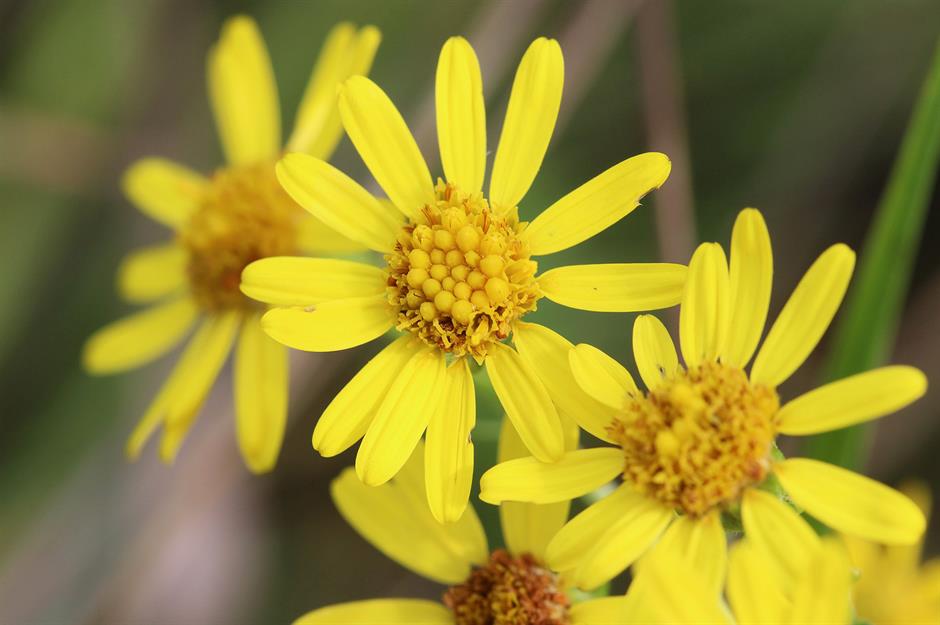
Ragwort is easily identifiable thanks to its flat-topped clusters of bright yellow, daisy-like flowers that sit atop branched stems.
When the seedlings appear in the autumn, they have wavy-edged, spade-shaped leaves, according to the RHS. If this leafy rosette is damaged in the first year – by mowing, for example – the plant can become a perennial and live for multiple years.
If they remain undamaged, a ragwort plant will flower in its second year and usually die after flowering.
Common ragwort treatment
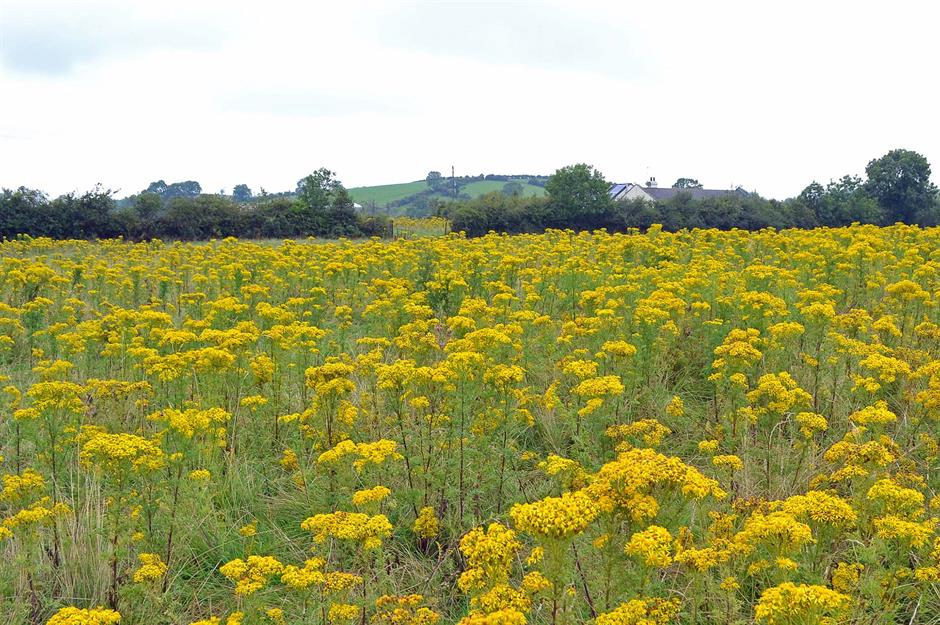
The Ragwort Control Act 2003 Code of Practice states that landowners and occupiers must prevent the plant spreading where it poses a risk to horses and livestock, or spreading into fields used for growing animal forage like hay.
Avoid cutting or mowing ragwort, as it causes vigorous regrowth. Instead, hoe off or smother seedlings with a 10cm (4in) layer of mulch.
You can also pull up or dig out the plants. Remove mature plants before they start seeding and pull up as much of the root as possible.
Broad-leaved dock (Rumex Obtusifolius)
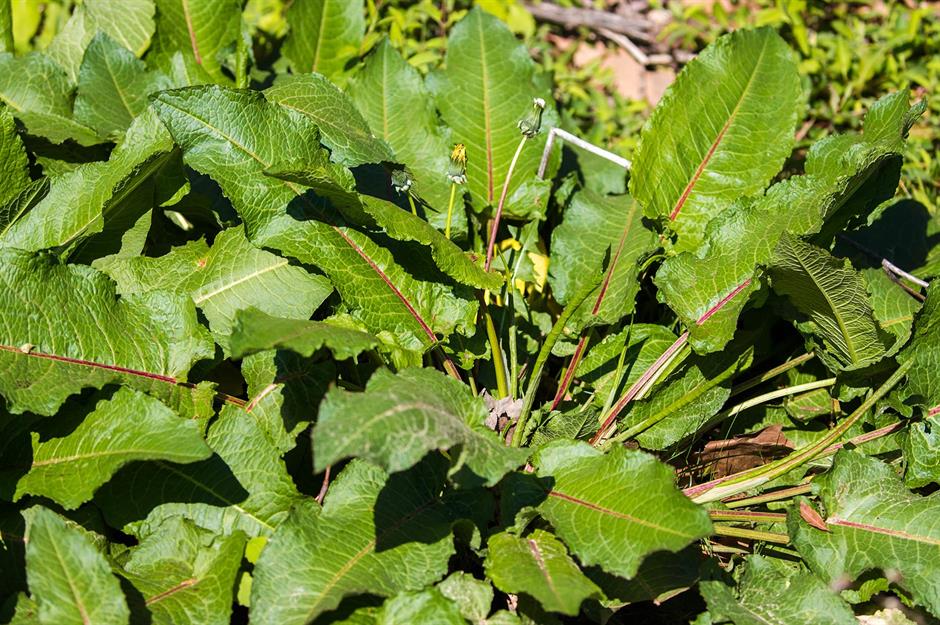
We may fondly remember rubbing dock leaves on nettle stings as children, but broad-leaved dock – to give it its correct name – can be harmful and, thanks to its persistent nature, it's another one listed in the Weeds Act 1959. Its cousin, curled dock, also appears on the list.
A widespread British native, dock grows naturally on grassland, wasteland and marshes, and provides food for birds, moths and butterflies.
Broad-leaved dock: what can go wrong

Thanks to its status as an 'injurious weed', broad-leaved dock must be prevented from spreading onto private land. If your council serves you with an order to remove the plant from your garden and you ignore it, you could be convicted and fined £2,500.
They're harmful to humans and pets if eaten in large quantities, and you're recommended to wear gloves when handling.
How to identify broad-leaved dock
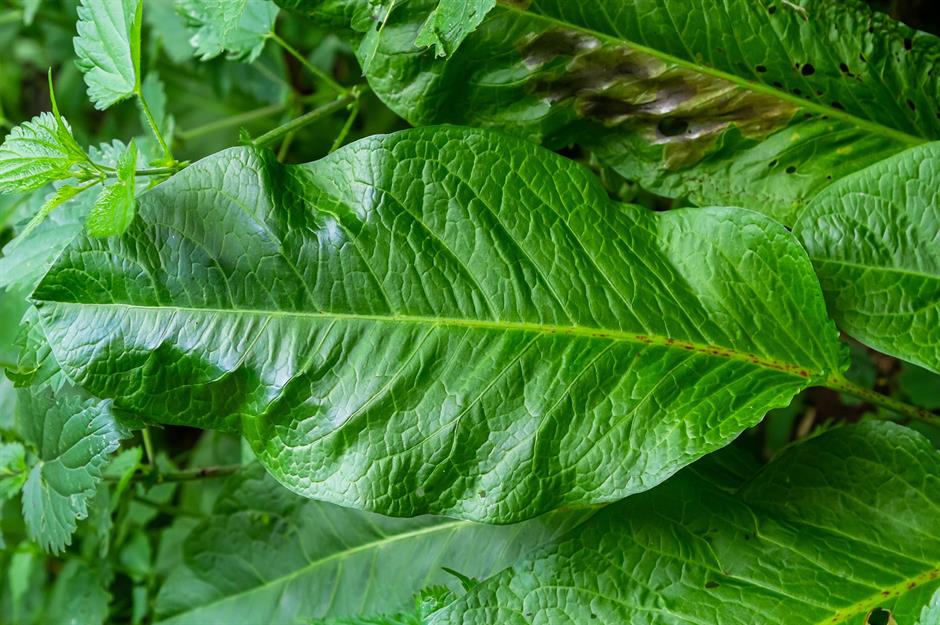
The broad-leaved dock's large, wavy-edged leaves are a dead giveaway when identifying this plant. Slightly shiny, they measure up to 30cm (12in) long by 15cm (6in) wide.
Mature plants spread between 1.6–3 feet (0.5–1m) across and can reach up to 5 feet (1.5m) in height.
Sprays of green and red flowers top the stems in summer, which then turn to fruit, which can last until winter.
Broad-leaved dock treatment
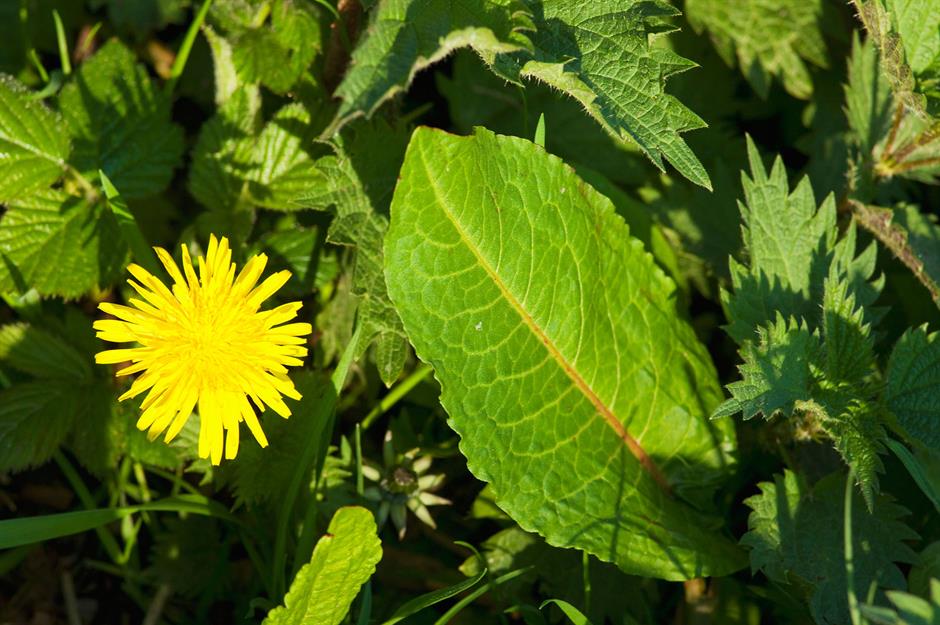
The dock's taproots can grow up to 1.2m (4ft) deep, which is one of the reasons it's so hard to get rid of. If you need to remove them, aim to dig out young plants before their root systems fully develop. If you can remove the top 12-15 cm (5-6in) of the root, deeper sections are unlikely to regenerate.
Deadheading prevents self-seeding, while regular cutting with a strimmer or mower will weaken and eventually kill the plants.
False lupin (Thermopsis montana)

Like green alkanet, false lupin isn't illegal to grow, but you may want to think twice before adding it to your borders.
These tall spikes of yellow flowers are native to the American northwest and thrive in cottage gardens or on banks, slopes and prairies.
However, this fast-spreading herbaceous perennial can become a nuisance...
False lupin: what can go wrong
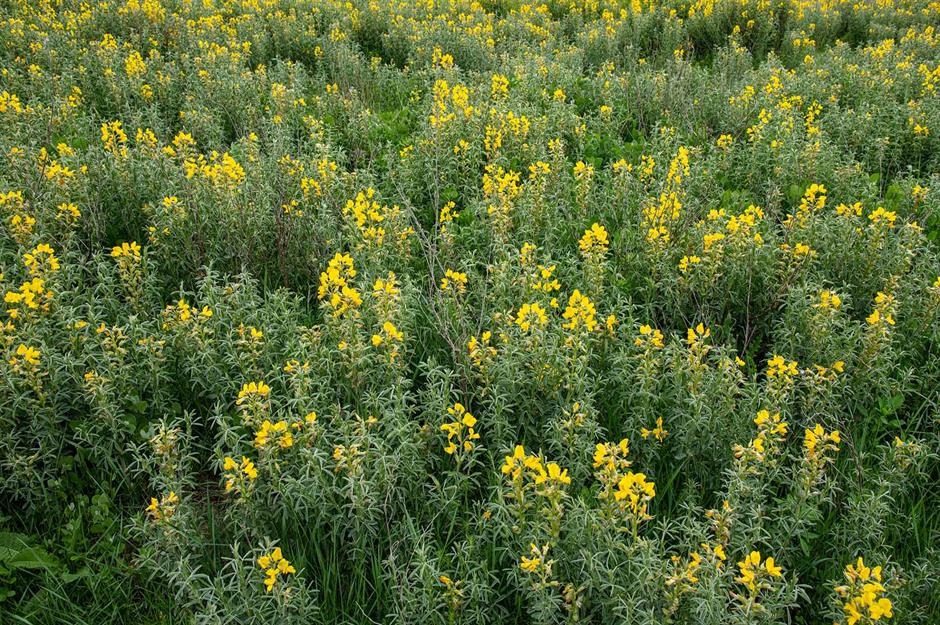
Given space, false lupin can spread to form a large colony by sending up suckers from its root system. The suckers can sprout up through lawns, beds and paths and onto neighbouring properties.
If left unchecked, these suckers turn into new plants, spreading quickly and becoming deep-rooted, says the RHS. They're also harmful to humans and dogs if eaten.
So if they're threatening to overrun your garden and escape, get your trowel ready and read on to find out how to identify and manage it...
How to identify false lupin
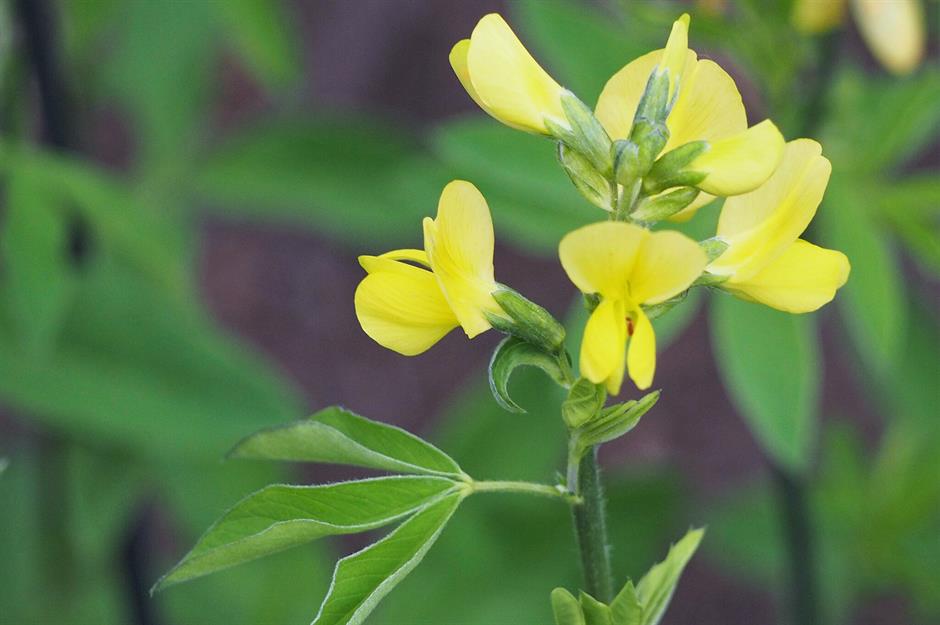
False lupin is easy to spot, thanks to its spires of yellow broom-like flowers and height of up to 90cm (35in). As its name suggests, it looks similar to the lupins (Lupinus) and tree lupins (Lupinus arboreus) so popular in cottage gardens, but the false lupin's flowers are less densely packed along the spire.
Look for soft, silvery green-blue leaves, which are made up of three 'leaflets', as you can see on this plant.
False lupin treatment

To stop false lupin spreading and becoming a problem, you can dig up the roots and/or remove the suckers.
To do this, scrape away the soil until the root is visible and tear (not cut) the shoot, so that most of the basal buds are removed. Otherwise, you might end up with as much false lupin as this Utah prairie!
Loved this? Now discover more amazing gardening ideas and advice
Comments
Be the first to comment
Do you want to comment on this article? You need to be signed in for this feature